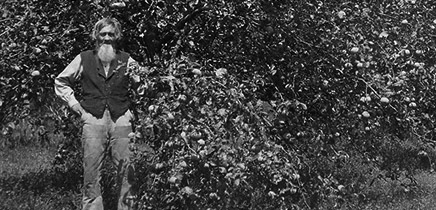The Camp Fire group was organized in 1910 by Dr. Luther Halsey Gulick, and his wife, Charlotte Vetter Gulick. It was designed as the female counterpoint to the Boy Scouts, providing opportunities for development of the “whole” girl. The first Camp Fire groups in Minnesota were organized in Minneapolis and St. Paul in 1912. These groups were charted in 1924. At first, these groups camped at a variety of sites, but wanted a permanent home of their own. This home was purchased in 1922.
After years of using sites owned by other groups, for a week at a time, the Minneapolis Camp Fire group leaders began searching for a permanent home. Camp Leader Margaret Fletcher, Mrs. Maude Armatage, and a local Rotary group worked together to locate a suitable property and pay for it, before turning control over to the Camp Fire group. The group found the old summer home of Governor John Lind, on Lake Minnewashta. This 64-acres was named “Camp Tanadoona”, which translates loosely as “living in the out of doors.”
Camp Tanadoona opened for its first season in 1925, with 207 girls in a 7-week season. Those girls camped out in tents, in relatively primitive conditions. Over the years since, many additions and improvements have been made to this camp, and other Camp Fire camps around the state. By 1929, there were 13 cabins, a dining hall, and one lodge. From the 1920’s through the 1950’s, additions included: screened cabins, Corona Lodge, Awanka Lodge, Shangra Lodge, Blue Bird Lodge, Katawa (“Place of Meeting”), and dining hall Tasiago. An area called Tenerra was built to provide a primitive camping experience for older youth. It was renamed Camp Matakaki after a Camp Fire girl’s death in the early 1980’s, and served as a camp within a camp for many years.
Other changes occurred at Camp Tanadoona in response to changes in parent organization Camp Fire Girls. In 1951, the national headquarters put out a call “for greater inclusiveness of all groups within all segments of membership.” Between 1964-1967, a national effort targeting low-income, inner-city girls was launched. And in 1974, Camp Fire expanded to include boys.
In the twenty-first century, Camp Tanadoona is 103 acres of forest and prairie on Lake Minnewashta. Summer camps are designed for youth from 5-17 years of age. These camps include day camps, resident camps, and trips to locations such as the Northwoods. Campers come from all over the metro, many provided scholarships to attend through a “Campership Fund.” Camp Fire Minnesota only operates two camps in the twenty-first century: Camp Tanadoona in Chanhassen and Camp Bluewater, near Grand Rapids, MN. As a Camp Fire outdoor program, Camp Tanadoona is grounded in helping youth achieve the following outcomes:
- Greater self-awareness and positive values
- Increased social skills and sense of belonging
- Increased knowledge of and appreciation for the natural environment
- Increased sense of competency and empowerment
It is one of the few remaining camps, operated by any organization, in the western suburbs or 7-county metro area.
Camp Fire USA, Minnesota website. “Camp Tanadoona”. Accessed August 20, 2014. http://www.campfireusa-mn.org/centennial/camp_tanadoona.html
Camp Fire USA, Minnesota website. “Camp Fire in Minnesota Timeline.” Accessed August 20, 2014. http://www.campfireusa-mn.org/centennial/centennial_history.html
Hoisington, Daniel John. Chanhassen: A Centennial History. Chanhassen, MN: The Press, Banta Corporation, July 1996.
Secondary:
“Award Winner Named Director at Camp Tanadoona in Chanhassen.” Chanhassen Villager, April 26, 1990.
“Camp Tanadoona Offers Camp Options.” Carver County Herald, June 22, 1989.
“Camp Tanadoona- Pictures.” Chaska Herald, April 1, 2010.


